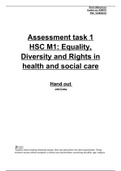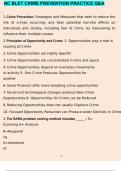Essay
Health and Social Care level 2 unit 2 Equality and diversity
- Institution
- OCR
health and socil care level2 unit 2 equality diversity in health and social care. ths essay was marked as A* it includes D1 1.1- D2 1.2: C1 2.1: C3 3.1- B1 2.3 - A1 3.3-
[Show more]





